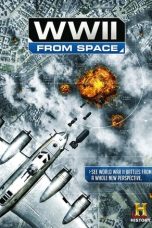- Source: 19th (Western) Division
- San Bernardino, California
- Tentara Revolusioner Nasional
- Didier Drogba
- Selandia Baru
- Neo-romantisisme
- Andre Gunder Frank
- Agama Hindu
- Yerusalem
- Bahasa Yunani Himarë
- George S. Patton
- 19th (Western) Division
- 19th Division
- Western Division
- 19th Motor Rifle Division
- 19th Air Division
- Lochnagar mine
- Kitchener's Army
- Tom Bridges
- Western Europe
- Lands administrative divisions of Western Australia
Classified (2024)
Once Upon a Time… in Hollywood (2019)
Irati (2023)
Resident Evil: Welcome to Raccoon City (2021)
Resident Evil: Welcome to Raccoon City (2021)
No More Posts Available.
No more pages to load.
The 19th (Western) Division was an infantry division of the British Army, part of Kitchener's Army, formed in the Great War.
Formation history
The 19th (Western) Division was created under Western Command in September 1914, shortly after the outbreak of the Great War, from men volunteering for Lord Kitchener's New Armies. The division, whose first commander was Major General Charles Fasken, a 59-year old Indian Army officer brought out of retirement, was formed as part of Kitchener's Second New Army (K2) and, in common with most other newly-raised Kitchener units, there was a severe shortage of trained officers and NCO's to train the men, alongside a lack of modern equipment, training facilities and billets. However, by June 1915, training had progressed well and the division was sent to the Western Front, where it remained for the rest of the war.
Order of battle
The 19th (Western) Division was constituted as follows during the war:
56th Brigade
7th (Service) Battalion, King's Own (Royal Lancaster Regiment) (disbanded February 1918)
7th (Service) Battalion, East Lancashire Regiment (disbanded February 1918)
7th (Service) Battalion, South Lancashire Regiment (disbanded February 1918)
7th (Service) Battalion, Loyal North Lancashire Regiment (disbanded February 1918)
4th (Extra Reserve) Battalion, King's (Liverpool Regiment) (joined 3 December 1915, left 15 December 1915)
56th Machine Gun Company, Machine Gun Corps (joined 14 February 1916, moved to 19th Machine Gun Battalion 14 February 1918)
56th Trench Mortar Battery (joined 17 June 1916, broken up 5 February 1918, reformed 6 March 1918)
9th (Service) Battalion, Cheshire Regiment (joined February 1918)
1/4th Battalion, King's (Shropshire Light Infantry) (joined February 1918)
8th (Service) Battalion, Prince of Wales's (North Staffordshire Regiment) (joined February 1918)
57th Brigade
10th (Service) Battalion, Royal Warwickshire Regiment
8th (Service) Battalion, Gloucestershire Regiment
10th (Service) Battalion, Worcestershire Regiment (until June 1918)
8th (Service) Battalion, Prince of Wales's (North Staffordshire Regiment) (until February 1918)
57th Machine Gun Company, Machine Gun Corps (joined 14 February 1916, moved to 19th Machine Gun Battalion 14 February 1918)
57th Trench Mortar Battery (joined 15 June 1916)
3rd Battalion, Worcestershire Regiment (joined June 1918)
58th Brigade
9th (Service) Battalion, Cheshire Regiment (left February 1918)
9th (Service) Battalion, Royal Welsh Fusiliers
5th (Service) Battalion, South Wales Borderers (left December 1914)
9th (Service) Battalion, Welsh Regiment
6th (Service) Battalion, Duke of Edinburgh's (Wiltshire Regiment) (from December 1915 until June 1918)
58th Machine Gun Company, Machine Gun Corps (joined 14 February 1916, moved to 19th Machine Gun Battalion 14 February 1918)
58th Trench Mortar Battery (joined 15 June 1916)
2nd Battalion, Duke of Edinburgh's (Wiltshire Regiment) (joined May 1918)
Divisional Troops
6th (Service) Battalion, Duke of Edinburgh's (Wiltshire Regiment) (left December 1914)
5th (Service) Battalion, South Wales Borderers (joined as provisional Pioneer battalion December 1914, conversion completed February 1915)
13th Motor Machine Gun Battery (joined 14 July 1915, left 7 March 1916)
246th Machine Gun Company, Machine Gun Corps (joined 19 July 1917, moved into 19 Machine Gun Battalion 14 February 1918)
19th Battalion, Machine Gun Corps (formed 14 February 1918)
Divisional Mounted Troops
C Squadron, Queen's Own Yorkshire Dragoons (joined 26 June 1915, left 21 April 1916)
19th Divisional Cyclist Company, Army Cyclist Corps (formed 19 November 1914, left 21 April 1916)
Divisional Artillery
LXXXVI Brigade, Royal Field Artillery (left 23 January 1917)
LXXXVII Brigade, Royal Field Artillery
LXXXVIII Brigade, Royal Field Artillery
LXXXIX (Howitzer) Brigade, Royal Field Artillery (broken up 8–9 September 1916)
19th Divisional Ammunition Column Royal Field Artillery
19th Heavy Battery, Royal Garrison Artillery (raised with the division but moved independently to France on 15 July 1915 and joined XXI Brigade, Royal Garrison Artillery)
W.19 Heavy Trench Mortar Battery, Royal Field Artillery (joined May 1916, disbanded 19 February 1918)
X.19, Y.19 and Z.19 Medium Mortar Batteries, Royal Field Artillery (formed by May 1916; on 18 February 1918, Z broken up and batteries reorganised to have 6 x 6-inch weapons each)
Royal Engineers
81st Field Company, Royal Engineers
82nd Field Company, Royal Engineers
94th Field Company, Royal Engineers
19th Divisional Signals Company, Royal Engineers
Royal Army Medical Corps
57th Field Ambulance, Royal Army Medical Corps
58th Field Ambulance, Royal Army Medical Corps
59th Field Ambulance, Royal Army Medical Corps
36th Sanitary Section, Royal Army Medical Corps (left 9 July 1917)
Other Divisional Troops
19th Divisional Train Army Service Corps (154, 155, 156 and 157 Companies)
31st Mobile Veterinary Section Army Veterinary Corps
220th Divisional Employment Company (joined 19 July 1917)
19th Divisional Motor Ambulance Workshop (absorbed into divisional train 6 April 1916)
Commanders
Major General Charles Fasken September 1914 — December 1915
Major General Tom Bridges December 1915 — September 1917
Major General George Geoffreys September 1917 — February 1919
Victoria Cross recipients
Second Lieutenant Hugh Colvin, 9th (Service) Battalion, Cheshire Regiment
Temporary Lieutenant Colonel Adrian Carton de Wiart, commanding the 8th (Service) Battalion, Gloucestershire Regiment
Acting Captain Eric Dougall, LXXXVIII Brigade, Royal Field Artillery
Temporary Captain Julian Gribble, 10th (Service) Battalion, Royal Warwickshire Regiment
Captain Manley James, 8th (Service) Battalion, Gloucestershire Regiment
Private James Miller, 7th (Service) Battalion, King's Own (Royal Lancaster Regiment)
Private Thomas Turrall, 10th (Service) Battalion, Worcestershire Regiment
Lieutenant Thomas Wilkinson, 7th (Service) Battalion, Loyal North Lancashire Regiment
See also
List of British divisions in World War I
References
Further reading
Roberts, James (2017). Killer Butterflies: Combat, Psychology And Morale In The British 19th (Western) Division 1915–18. Wolverhampton Military Studies. Warwick: Helion. ISBN 978-1-911512-24-0.
External links
The British Army in the Great War: The 19th (Western) Division













